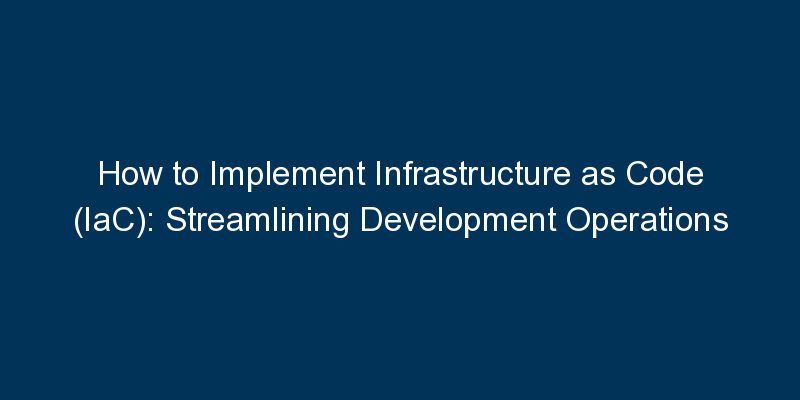Implementing Infrastructure as Code (IaC) is a transformative practice that streamlines the management and provisioning of IT infrastructure. This blog provides a comprehensive guide on how to implement Infrastructure as Code, empowering organizations to automate and optimize their development operations.
Introduction:
Infrastructure as Code (IaC) treats infrastructure configuration as code, allowing for automated provisioning and management. This practice enhances efficiency, scalability, and consistency in development operations. This guide explores the key steps in implementing Infrastructure as Code.
Key Steps to Implement Infrastructure as Code (IaC):
- Select IaC Tools: Choose suitable IaC tools based on your organization’s requirements. Popular tools include Terraform, Ansible, and AWS CloudFormation. Selecting the right tool is crucial for seamless integration into your existing development environment.
- Define Infrastructure in Code: Write code to define the desired state of your infrastructure. This includes servers, networks, and other resources. The code should be version-controlled, allowing for easy tracking and management.
- Use Declarative Configuration: Adopt a declarative configuration approach where you specify the desired state, and the IaC tool ensures that the actual state matches the defined state. This simplifies configuration management and reduces the risk of configuration drift.
- Automate Provisioning and Deployment: Leverage IaC to automate the provisioning and deployment of infrastructure. This enables rapid and consistent creation of development, testing, and production environments, reducing manual errors and improving deployment speed.
- Implement Continuous Integration/Continuous Deployment (CI/CD): Integrate IaC into your CI/CD pipelines. This ensures that changes to infrastructure code undergo automated testing and deployment, promoting a continuous and reliable delivery process.
- Collaboration and Version Control: Encourage collaboration among development and operations teams. Utilize version control systems like Git to manage changes to IaC code collaboratively. This facilitates versioning, rollback, and collaboration on infrastructure changes.
Conclusion:
Implementing Infrastructure as Code is a strategic move toward efficient and automated development operations. By following the steps outlined in this guide, organizations can embrace IaC to streamline infrastructure management, enhance collaboration, and accelerate the development lifecycle.






















Comments